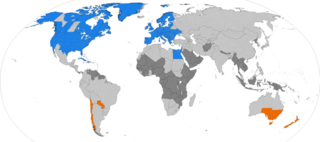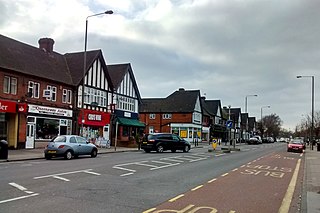This article is being considered for deletion in accordance with Wikipedia's deletion policy. Please share your thoughts on the matter at this article's entry on the Articles for deletion page. |
| Derwent House | |
|---|---|
| Location | 68 Camden Park Road [1] |
| Coordinates | 51°24′38″N0°03′41″E / 51.410571°N 0.061435°E Coordinates: 51°24′38″N0°03′41″E / 51.410571°N 0.061435°E |
| Built | 1899 |
| Built by | William Willett |
| Architect | Ernest Newton |
Derwent House, on Camden Park Road, Chislehurst, Bromley, is one of a number of the locally renowned 'Willett-built' houses erected on the Camden Park Estate by high-class speculative builder William Willett in the 1900s.

Chislehurst is a suburban district in south east London, England, within the London Borough of Bromley. It borders the London Boroughs of Bexley and Greenwich, and lies east of Bromley and south west of Sidcup. It is 10.5 miles (16.9 km) south east of Charing Cross. Chislehurst is in the historic county of Kent.

Bromley is a large town in the London Borough of Bromley, Greater London, England, 9.3 miles (15.0 km) south-east of Charing Cross.

William Willett was a British builder and a tireless promoter of British Summer Time.
Willett bought the entire estate in 1890 [2] with the intention of building on it all but the venture was not successful and he erected only a small number of houses there and on Wilderness Road. The remainder of the estate became the Chislehurst Golf Club with the mansion, Camden Place, becoming its clubhouse.
Derwent House was erected in 1899. The design is inspired by the arts and crafts movement. It is of red brick in with a red clay tiled roof. It was designed by Ernest Newton and a ballroom was added in 1903 by Amos Faulkner (Willett's in-house architect). Faulkner also designed the detached motor house with carriage-wash canopy. Derwent is a Grade II listed building located within the Chislehurst Conservation Area. [3] [1] Willett lived in a similar Newton house further along at 88 Camden Park Road. A blue plaque on that building commemorates Willett as the promoter of daylight saving time.
Ernest Newton was an English architect and President of Royal Institute of British Architects.

A listed building, or listed structure, is one that has been placed on one of the four statutory lists maintained by Historic England in England, Historic Environment Scotland in Scotland, Cadw in Wales, and the Northern Ireland Environment Agency in Northern Ireland.

Daylight saving time (DST), also daylight savings time or daylight time and summer time, is the practice of advancing clocks during summer months so that evening daylight lasts longer, while sacrificing normal sunrise times. Typically, regions that use daylight saving time adjust clocks forward one hour close to the start of spring and adjust them backward in the autumn. In effect, DST causes a lost hour of sleep in the spring and an extra hour of sleep in the fall.











